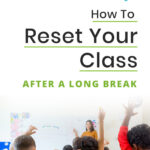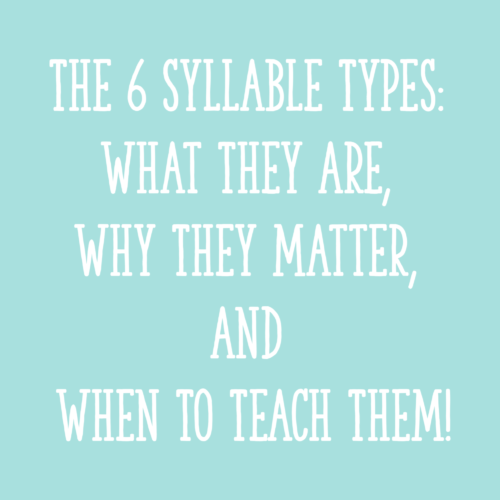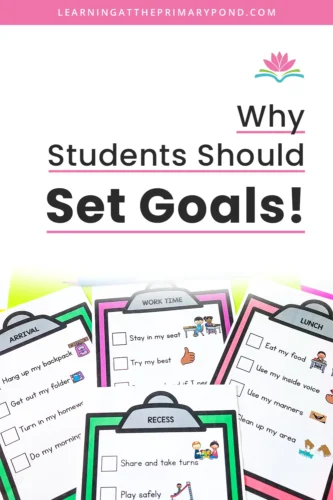Want to make your reading block more efficient? In this post, I share 5 ideas to help you make the most of the time you have!
 Photo Credits: Backgroundy, Shutterstock
Photo Credits: Backgroundy, Shutterstock
Minimize Unnecessary Transitions
Transitions always seem to take foreeevvverrrr in the primary grades. Of course, transitions are necessary (and can be a good movement/brain break for students). But here are a couple of questions to ask yourself if you need to cut down on transition time:
- Do you use a “rotations” model, where short periods of independent work are broken up by minilessons? All that transitioning eats up time. Could you do a minilesson at the beginning, a longer block of independent work time, and then another minilesson later on?
- Are there instances where the entire class has to get something (i.e. a book, a folder) from one place in the classroom? Having all your students wait in line can eat up a lot of time. What if you took the stack of books or folders—or whatever it is—and put it next to your table groups? Each table could have its own little bin for materials, thereby eliminating the need for the entire class to retrieve materials from a single location.
- If you do a group bathroom break, would it be possible to allow students to just use the bathroom as needed? Sometimes it can be an issue of safety, if the bathroom is far from your classroom—I get that. But allowing one girl and one boy to use the bathroom at a time, when they need to, can really free up time!
- If you have to set up or grab materials, could you have student helpers accomplish this during a transition time? Some kids tend to clean up quickly, and they’re always the first ones sitting on the rug. Could you enlist them to get out materials for the next activity?
Just some things to think about! 🙂
Use a Timer
I have to admit…I don’t love the go-go-go pace of the school day. But if I’m just not finishing all that I need to accomplish, a timer is SUCH a helpful tool in keeping myself on track.
AND if you’re like me and tend to forget to set the timer in the first place, try setting a series of alarms on your phone or tablet, like this:

Try An A Day / B Day Schedule
Sometimes doing every activity every day can end up being inefficient! When you have a tiny block of time for an activity, how valuable does it end up being? Some of that time gets eaten up by transitions and other misc. housekeeping tasks, and students don’t end up with a lot of focused learning time.
If this sounds like your situation, try an A Day / B Day schedule. On A Days, you make time for certain instructional activities, and on B Days, you make time for different instructional activities. For example, maybe you can alternate readalouds with shared reading. Or maybe some days you spend more time on phonics, while on other days you spend more time on grammar.
If you use this type of schedule, you’ll want to alternate weeks too. One week you have an “A Day” on Monday, Wednesday, and Friday, and the next week, you have an “A Day” on Tuesday and Thursday.
There are certainly some activities that you’ll want to include in both A Days and B Days, however. For example, students should have time to practice reading and writing every day.
Give Kids a Quick Break
I know, I know. If you’re trying to SAVE time, adding in a break can SEEM counterintuitive, but…it can actually help kids focus!
When my students have a chance to blow off some steam outside—or even just play and chat indoors—they usually return to their work feeling more focused. More focused students = a more efficient school day!
Another idea – time your students’ transitions. If they can “beat the timer” and transition to the next activity, offer them an extra break!
Just Do Less. Yes, Less.
We live in an era of information overload. There are so many GREAT instructional activities that we can do. But we don’t have to do them all.
Are there any places in your literacy block where you can cut things out? Or maybe do them less often?
If you find yourself rushing from one thing to the next, you may not be dedicating the time to each activity that it really deserves. Try to see what you can cut out or shift to an A Day / B Day schedule.
Sometimes, there’s only so much that we can do to cut things out. Our administration may require that we implement certain instructional routines on a daily basis. I get that.
But I do worry about the go-go-go atmosphere that we (myself included) end up creating in our classrooms. This HAS to be impacting students. More kids than ever before suffer from anxiety. Practices like mindfulness are shown to improve student behavior, but rushing from one thing to the next is anything BUT mindful.
I wish I had an answer or a solution to all this! But if you can, consider cutting out at least one thing from your schedule each day (it doesn’t have to be the same thing). Quality over quantity, right?
Happy teaching!













This was very helpful!! I love the A Day/ B Day schedule. Wow!! I will try this.